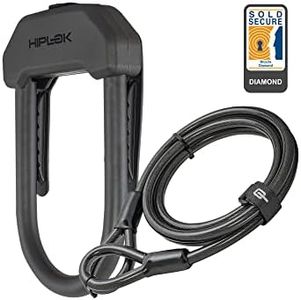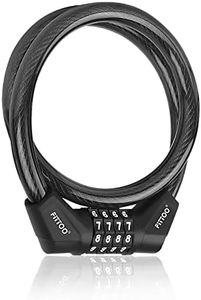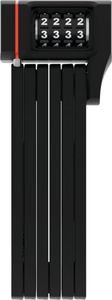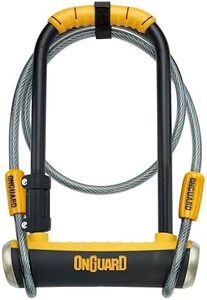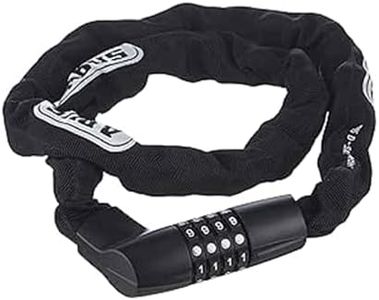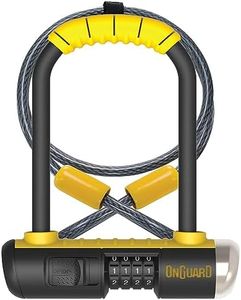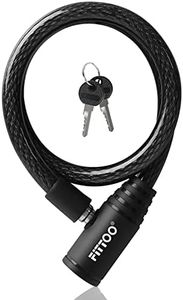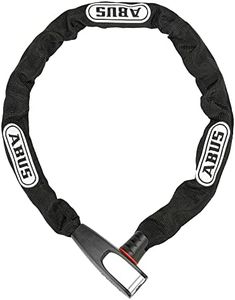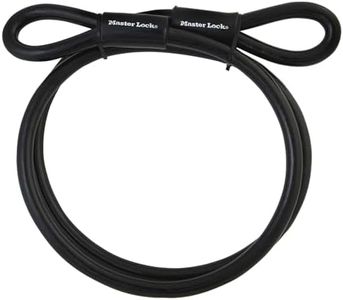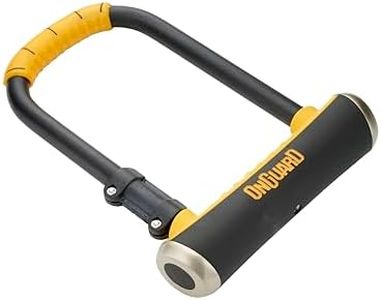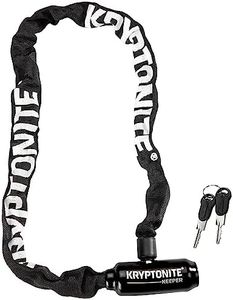We Use CookiesWe use cookies to enhance the security, performance,
functionality and for analytical and promotional activities. By continuing to browse this site you
are agreeing to our privacy policy
10 Best Kids Bike Locks
From leading brands and best sellers available on the web.Buying Guide for the Best Kids Bike Locks
Choosing the right bike lock for your child is important to keep their bicycle safe and to give both you and your child peace of mind. Kids’ bike locks should be easy to use, safe, and lightweight enough for them to handle. The key is to balance security with usability – it should deter theft, but your child should feel confident unlocking and locking their bike independently. Understanding the key specs will help you find a lock that matches your child’s age, strength, and daily routine.Lock TypeThe type of lock refers to the way the bike lock secures the bike and how it opens. The most common types for kids are cable locks, chain locks, and sometimes U-locks. Cable and chain locks are flexible and lightweight, making them easier for younger children to manage, while U-locks are heavier and provide more security but can be difficult for small hands to handle. Consider your child’s age and coordination; younger children usually do best with cable locks, while older, more responsible kids might manage a U-lock. Always prioritize a type your child finds easy enough to use on a daily basis.
Locking MechanismThis spec describes how the lock is opened: with a key or with a combination code. Key locks can be more secure, but keys can get lost. Combination locks are convenient for kids since they don’t require carrying a key, but your child must remember the code. For very young children, a combination lock with a simple code may be easiest, while older kids could manage a keyed lock if they’re responsible and organized. Think about your child’s ability to remember codes or keep track of keys before choosing.
Size and WeightThe size and weight of the bike lock determine how easy it is for your child to use and carry. Heavy or bulky locks may offer more security, but they can feel overwhelming for a child to transport and use. Lightweight, kid-sized locks are easier for children to manage by themselves and less likely to be left behind. Balance is key: select a lock that’s light enough for your child to carry but still thick and strong enough to discourage theft. Test if your child can comfortably use the lock before buying.
Security RatingSecurity ratings are sometimes provided by the manufacturer or independent organizations to indicate how resistant the lock is to tampering or theft. Ratings range from low to high security. For a child’s bike, especially in low-risk areas like school playgrounds or home garages, moderate security is usually sufficient. However, if your child’s bike will be left in busier, public areas, a higher security rating is a good idea. Match the security level to where and how your child will use the lock most often.
Ease of UseEase of use covers how simply the lock opens, closes, and attaches to the bike. If a lock is tricky or fiddly, your child may stop using it. Look for locks with large dials, simple mechanisms, and a design your child can manage without adult help. If possible, let your child try operating a few lock types. A lock that’s easy and quick for them to use will make them more likely to secure their bike every time.
Material DurabilityThe material of the lock affects both its strength and its longevity. Locks made of sturdy steel or hardened metals are harder to cut or break, making them more secure. At the same time, the covering on the lock (such as vinyl or rubber) helps prevent scratches on the bike’s frame and can make handling the lock more comfortable for kids. For kids’ bikes, find a balance between a material that’s strong enough to prevent quick theft and gentle on little hands and the bike’s paint.

